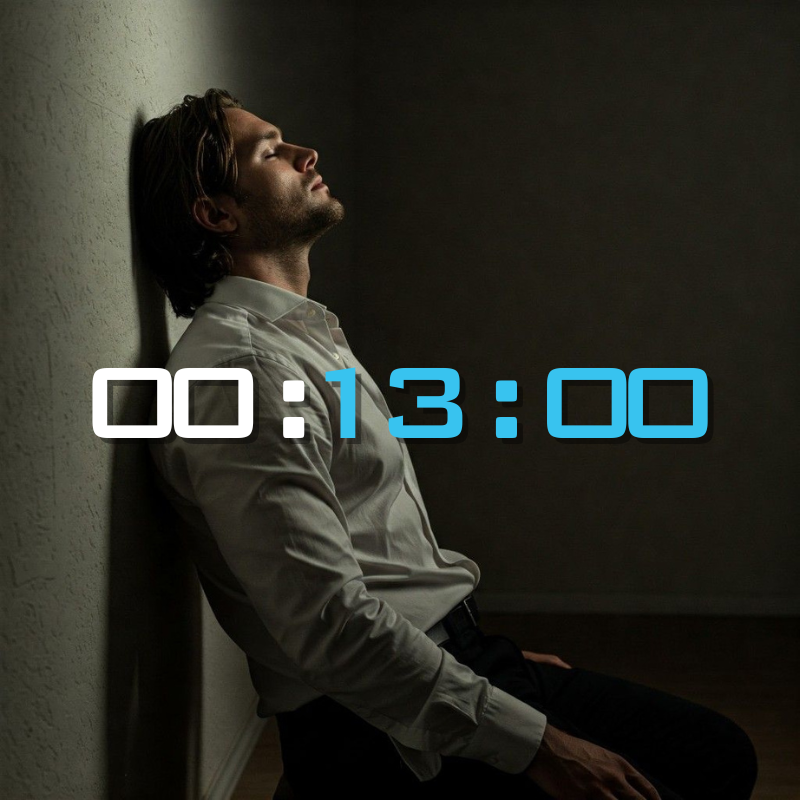THE 13-MINUTE MISSION & THE SILENT SUICIDE EPIDEMIC: WHY NOW

FRANK’S STORY
Frank came to me because his best friend killed himself.
He didn’t see it coming. There was no addiction, no diagnosis, no dramatic collapse. Just a man with a wife, kids, a job, and plans for the weekend—until there weren’t.
When Frank sat across from me, he didn’t look angry. He looked lost.
“How could I not have known?” he asked. “How could this happen?”
That question hangs in the air for thousands of men across this country every single day.
Because every 13 minutes, another man takes his own life.
That’s 111 men today. 40,000 this year.
More than all the combat deaths from twenty years of war in Iraq and Afghanistan—combined.
If they’d died on a battlefield, we’d call them heroes.
But when they die in silence, we call it “mental health.”
We light a candle. We whisper. We scroll on.
OTHER EPIDEMICS
If forty thousand men died in combat every year, we’d call it war.
If forty thousand men died in car crashes, we’d rebuild the roads.
If forty thousand men died from a virus, we’d shut down the world.
We already did.
When COVID-19 hit, nearly 400,000 Americans died in that first year.
We shut down cities. We shuttered businesses. We masked, distanced, and sanitized everything in sight. And yes—it mattered. Those lives mattered.
But here’s the part we don’t talk about: since that time, over 800,000 Americans have taken their own lives.
The majority were men.
No lockdowns.
No briefings.
No national mobilization.
Just silence.
THE STATISTICS WE IGNORE
49,500 Americans died by suicide in 2022—an all-time high.
Nearly 80% of them were men.
That’s 7× more deaths than testicular cancer.
Nearly twice as many as homicide (~22,800).
Three times more than drunk-driving crashes.
More deaths than war, homicide, and natural disasters combined.
Add in drug overdoses and alcohol-related deaths, and we hit 186,000 “deaths of despair” in 2022—the majority of them men.
Men are dying not from disease, but from disconnection.
Not from weakness, but from worthlessness.
THE MEANING CRISIS
For twenty-five years, I’ve stood in the aftermath of that disconnection—first as a rabbi, then as a grief counselor, and now as a logotherapist and men’s coach.
I’ve buried too many sons, fathers, and friends. And I’ve realized this isn’t just a mental health epidemic. It’s what Dr. Viktor Frankl called the existential vacuum—the emptiness that comes when life loses meaning.
It’s a meaning illness.
A purposelessness epidemic.
Frankl saw it in Auschwitz; I see it in men’s eyes every week. When a man no longer feels needed, known, or connected, he goes hollow. He can still produce, perform, and provide—but he can’t feel.
We call it depression, but it’s depletion.
We call it anxiety, but it’s emptiness.
What it really is—what Frankl named before anyone else—is the crisis of meaning.
Men haven’t lost their way.
They’ve lost their why.
THE FALSE CHOICES
And look at what men are being offered.
On one side, there’s bro culture—the shallow parody of masculinity that equates arrogance with strength, dominance with confidence, and numbness with control. It’s not masculinity—it’s insecurity with better lighting.
On the other side, there’s therapy culture—important, yes, but often built for crisis and, frankly, not speaking to men.
Women are twice as likely to seek therapy as men. Two out of three therapy clients are female. While women are learning the language of vulnerability, men are still stuck translating.
Traditional therapy can absolutely help men—but it doesn’t reach most of them. Not because they don’t care, but because it doesn’t call them forward. It asks them to talk, but not to do. It asks them to feel, but not to forge meaning from that feeling.
Men don’t need to be tamed. They need to be tasked.
They don’t need coddling. They need calling.
THE THIRD WAY
That’s why we created Men’s Peer Groups and launched the 13-Minute Mission.
It’s not your grandfather’s fraternal lodge.
It’s not your grandmother’s sewing circle.
It’s something new—something necessary.
A structured, sacred space where men rediscover the balance between action and emotion, between discipline and depth, between solitude and brotherhood.
Every group runs on a rhythm:
Structure — because men need form before feeling.
Connection — because men die without belonging.
Vulnerability — because men need, and need to learn, how to be open.
Accountability — because men respect responsibility.
Intimacy — because men need to learn what it means to be truly seen—“into-me-see.”
This is the forgotten middle path between chaos and comfort.
It’s where the masculine meets the meaningful.
It’s where men remember what they’re for.
PUSHING BACK THE CLOCK
Every 13 minutes, a man dies by suicide. That’s the clock we live by.
Our mission is to push it back—to 14 minutes.
One more minute. One more breath. One more reason to stay.
That single minute equals 2,888 lives a year.
That’s 2,888 men who will see another sunrise.
2,888 families spared the question, “How did I not know?”
2,888 chances to turn despair into defiance.
This isn’t about awareness—it’s about action.
Not about fixing men—it’s about forging them.
Not about comfort—it’s about calling.
WHY NOW
Because the clock is still ticking.
Because the men are still disappearing—statistically, emotionally, spiritually.
Because we shut down the world for a virus, but we won’t even slow down for despair.
The 13-Minute Mission exists to awaken men to who they are, why they’re here, and who still needs them.
It’s a movement to reclaim purpose as medicine, meaning as strength, and brotherhood as antidote.
Frank’s still in my circle. He’s found his voice again, his backbone, his why. And maybe, when the next man starts to fade, Frank will notice. He’ll reach out. He’ll pull him back.
That’s how we push back the clock.
One man at a time.
One minute at a time.
One why at a time.
THE 13-MINUTE MISSION
Defy the clock. Find your why. Save a life.
